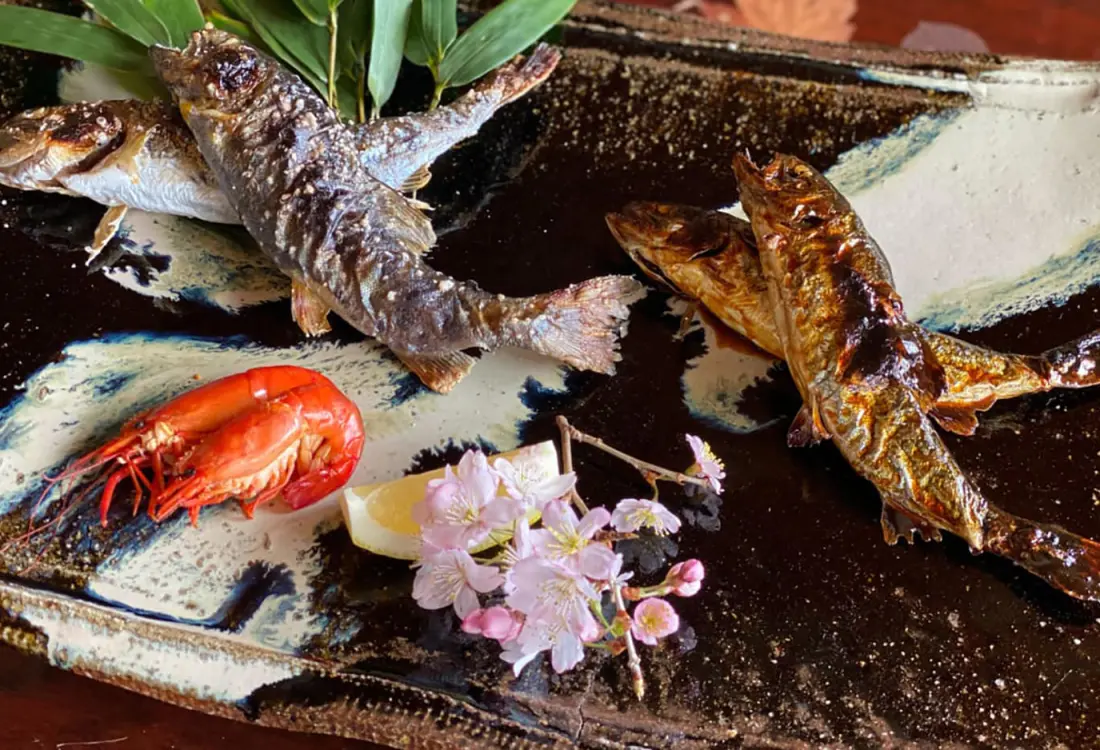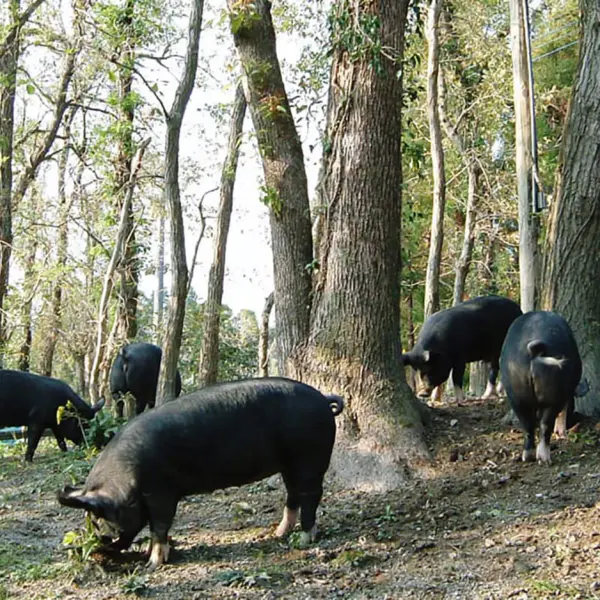
Flavors Bound to the Area and Loved by Locals
Karatsu City, Saga Prefecture
In recent years, the number of travelers seeking out restaurants in outlying regions is increasing. At these spots, you experience everything the region has to offer. They use local ingredients and prepare dishes with methods handed down over generations, not to mention they serve their creations in locally produced earthenware. The reason to visit these regions can be boiled down to one word: food.
Kyushu is home to many restaurants run by chefs who have returned home after honing their skills in the big cities or overseas. Embracing the local food movement, they use local ingredients as a matter of course, and their restaurants have become places where locals hold parties during festivals, and visitors from elsewhere can experience a dose of local hospitality.
Not too long ago, these restaurants were only known to the locals, but with the rise of social media, they have found their way onto the radar of people far and wide who now seek them out no matter how far-flung they may be.
One restaurant in Karatsu in Saga Prefecture, Amegen, has been serving upriver fish and freshly picked local herbs since 1838. Located on the Tamagawa River, it serves up icefish in spring, sweetfish in summer, Japanese mitten crab in autumn, and duck hot pot in winter accompanied by homegrown vegetables and hand-picked seasonal herbs.
The fresh ingredients are carefully prepared to bring out their natural flavors, and the seasonings are made from recipes handed down for hundreds of years. To top it off, the dishes are presented on beautiful pieces of Karatsu ware. Most of the serving dishes come from Nakazato Taroemon Kiln, which has been making earthenware in Karatsu for more than 420 years. The harmony of the delicious fare and the tableware crafted by the 13th generation Nakazato Taroemon (1923-2009) is yet another aspect you can enjoy at Amegen.

Thinly sliced carp washed in cold running water. The act of washing (arai) removes the oil and creates a crisp texture. (The difference between arai and sashimi is whether or not the fish is washed.) Dip it in the mellow vinegar miso and enjoy!

Segoshi is a method for cutting soft-boned fish. Fresh yamame trout are cleaned and then cut into chunks, bones, and all, then dipped in ice water and enjoyed raw, alongside sashimi. The yamame trout and sweetfish are grilled with salt or boiled with sugar, then eaten at room temperature. This method of preparation is only possible in areas where these fish breed in clean upstream waters. While the ways the fish are cut and seasoned differ from region to region, in Saga, they are mostly served with vinegar miso.

Amegen works closely with local fishers to source its fish. It is the primary buyer of icefish, which are caught using traditional methods. The sight of the fishermen in the Tamagawa River is a harbinger of spring in Karatsu. In this way, the relationship between these fishermen and the restaurant is a boon to the local economy.

Amegen derives its name from the fact that the first owner, Genkichi Tanaka, sold mizuame along with river fish dishes. Mizuame is a traditional sweetener whose history in Japan is longer than that of sugar. It is made by adding malt, which acts as an enzyme, to starch to create a sticky-sweet syrup. Amegen is famous for its ameyaki, yamame trout, and sweetfish grilled in a mixture of mizuame and soy sauce. After cooking, the bones are soft enough you can eat the whole fish, head and all!

Local mountain herb and wild vegetable tempura served with salt and lemon. Seasonal offerings include mugwort, saxifrage and butterbur shoots.

The signature Japanese mitten crab rice can be served almost year-round because the crabs are kept alive in a basket in the river right in front of the restaurant. The crabs, which are seasoned with a secret recipe, finish off the course meal. In early fall, they develop sweetness, and with the colder temperatures of winter, they become plump with even more meat. Why not go twice so you can enjoy the different flavors in each season?
Asia’s 50 Best Restaurants, which was scheduled to be held in Saga this year, has significantly boosted its name recognition throughout Kyushu in recent years. Often called the “Oscars of the regional food world,” the award ceremony is one of the most influential events in the food world. Since 2018, its organizers have also been granting Sustainable Restaurant Awards to recognize those restaurants that serve not only delicious food but also place value on local traditions and the environment.

Here you can enjoy delicious fish dishes in a Japanese-style room while listening to the sound of the river below. The high-quality local ingredients are prepared in a simple yet elegant style, and the flavor and presentation both evoke a sense of the seasons. Amegen is once again garnering attention for carrying on its unique culinary tradition for more than 180 years.
Amegen
1058-2 Hamatamamachi-gotanda, Karatsu City, Saga
Tel. 0955-56-6926
https://r.goope.jp/amegen
 The delicious secrets of Kagoshima's free-range Kurobuta pork
The delicious secrets of Kagoshima's free-range Kurobuta pork Everything You Need to Know About Fukuoka’s Famed Tonkotsu Ramen
Everything You Need to Know About Fukuoka’s Famed Tonkotsu Ramen Saga Beef: Wagyu To Remember
Saga Beef: Wagyu To Remember Discover Fukuoka's fruit kingdom
Discover Fukuoka's fruit kingdom Goto udon: a delicious legacy of Nagasaki's ancient trade routes
Goto udon: a delicious legacy of Nagasaki's ancient trade routes Feast your senses at Fukuoka's bustling fresh food market
Feast your senses at Fukuoka's bustling fresh food market Cultivating the world's largest citrus fruit in Kumamoto
Cultivating the world's largest citrus fruit in Kumamoto Hizen Hamashuku: Historic breweries that house the world’s best sake
Hizen Hamashuku: Historic breweries that house the world’s best sake In the shadow of a volcano: the world's largest daikon radishes
In the shadow of a volcano: the world's largest daikon radishes Raising Kumamoto's famed Japanese Brown Cattle
Raising Kumamoto's famed Japanese Brown Cattle




